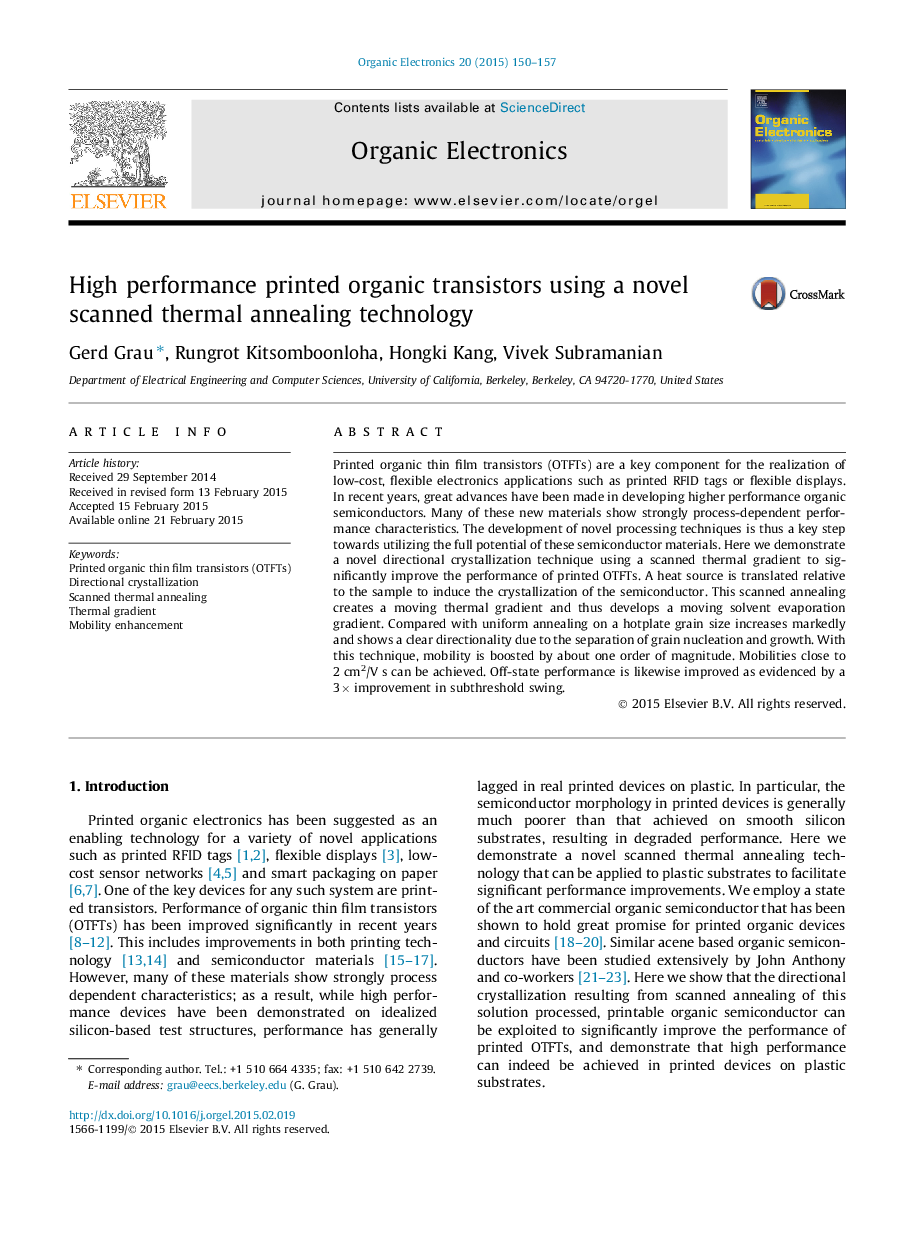| Article ID | Journal | Published Year | Pages | File Type |
|---|---|---|---|---|
| 1263741 | Organic Electronics | 2015 | 8 Pages |
•A novel crystallization technique for printed organic transistors is demonstrated.•A scanned thermal gradient is used to control the semiconductor crystallization.•The process is inherently compatible with roll-to-roll printing and plastic substrates.•Grain size is increased significantly compared with annealing by uniform heating.•Mobility is increased by an order of magnitude; close to 2 cm2/V s can be achieved.
Printed organic thin film transistors (OTFTs) are a key component for the realization of low-cost, flexible electronics applications such as printed RFID tags or flexible displays. In recent years, great advances have been made in developing higher performance organic semiconductors. Many of these new materials show strongly process-dependent performance characteristics. The development of novel processing techniques is thus a key step towards utilizing the full potential of these semiconductor materials. Here we demonstrate a novel directional crystallization technique using a scanned thermal gradient to significantly improve the performance of printed OTFTs. A heat source is translated relative to the sample to induce the crystallization of the semiconductor. This scanned annealing creates a moving thermal gradient and thus develops a moving solvent evaporation gradient. Compared with uniform annealing on a hotplate grain size increases markedly and shows a clear directionality due to the separation of grain nucleation and growth. With this technique, mobility is boosted by about one order of magnitude. Mobilities close to 2 cm2/V s can be achieved. Off-state performance is likewise improved as evidenced by a 3× improvement in subthreshold swing.
Graphical abstractFigure optionsDownload full-size imageDownload as PowerPoint slide
